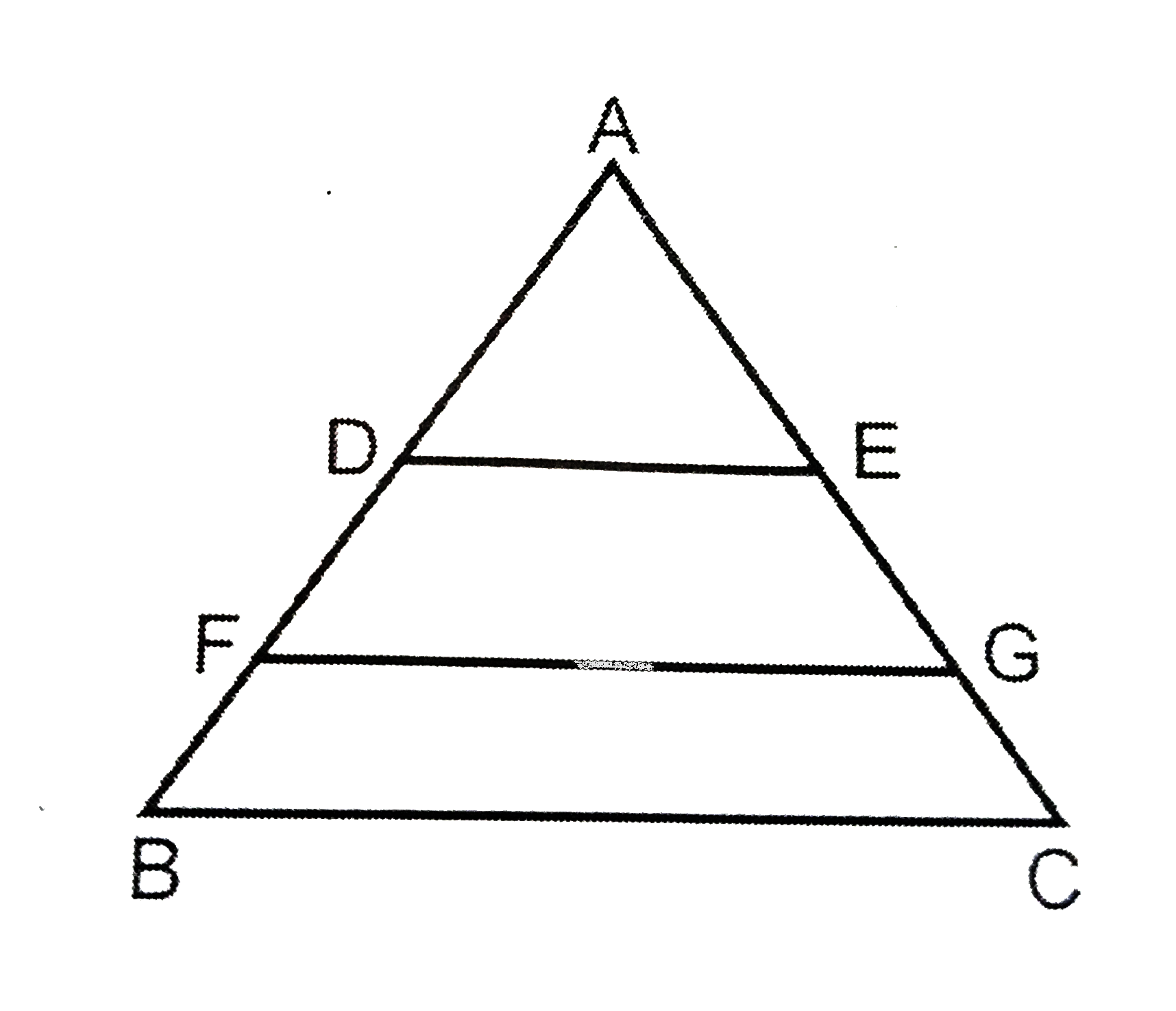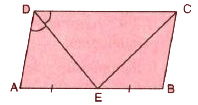In △ABC, D is the mid point of the side AB and E is centroid of △CDA. If OE⋅CD=0, where O is the circumcentre of △ABC, using vectors prove that AB=AC.
To solve the problem step by step using vectors, we will follow the instructions given in the video transcript.
1. Define the Points and Vectors:
Let O be the circumcenter of triangle ABC, and we can set O as the origin. Thus, we have:
- →A=→a
- →B=→b
- →C=→c
2. Identify the Midpoint D:
Since D is the midpoint of AB, we can express →D as:
→D=→A+→B2=→a+→b2
3. Find the Centroid E of Triangle CDA:
The centroid E of triangle CDA can be calculated using the formula for the centroid, which is the average of the position vectors of the vertices:
→E=→C+→D+→A3
Substituting →D:
→E=→C+→A+→B2+→A3=→C+2→A+→B23=→C+→A+→B23
4. Use the Condition OE · CD = 0:
The condition given is →OE⋅→CD=0. We can express →OE as:
→OE=→E−→O=→E
Since O is the origin, we have:
→OE=→E
Now, →CD=→D−→C:
→CD=→A+→B2−→C
5. Calculate the Dot Product:
The dot product →OE⋅→CD=0 implies:
→E⋅(→A+→B2−→C)=0
Expanding this gives:
⎛⎜⎝→C+→A+→B23⎞⎟⎠⋅(→A+→B2−→C)=0
6. Simplify and Rearrange:
After simplification, we will find that:
4→A⋅→B=4→C⋅→A
Dividing by 4 gives:
→A⋅→B=→C⋅→A
7. Conclude that AB = AC:
The equality →A⋅→B=→C⋅→A indicates that the lengths of the sides opposite to angles B and C are equal, which implies:
AB=AC
Let O be the circumcenter of triangle ABC, and we can set O as the origin. Thus, we have:
- →A=→a
- →B=→b
- →C=→c
Since D is the midpoint of AB, we can express →D as:
→D=→A+→B2=→a+→b2
The centroid E of triangle CDA can be calculated using the formula for the centroid, which is the average of the position vectors of the vertices:
→E=→C+→D+→A3
Substituting →D:
→E=→C+→A+→B2+→A3=→C+2→A+→B23=→C+→A+→B23
The condition given is →OE⋅→CD=0. We can express →OE as:
→OE=→E−→O=→E
Since O is the origin, we have:
→OE=→E
Now, →CD=→D−→C:
→CD=→A+→B2−→C
The dot product →OE⋅→CD=0 implies:
→E⋅(→A+→B2−→C)=0
Expanding this gives:
⎛⎜⎝→C+→A+→B23⎞⎟⎠⋅(→A+→B2−→C)=0
After simplification, we will find that:
4→A⋅→B=4→C⋅→A
Dividing by 4 gives:
→A⋅→B=→C⋅→A
The equality →A⋅→B=→C⋅→A indicates that the lengths of the sides opposite to angles B and C are equal, which implies:
AB=AC
Topper's Solved these Questions
- PRODUCT OF VECTORSBOOK - ARIHANT MATHS ENGLISHCHAPTER - PRODUCT OF VECTORSEXERCISE - JEE Type Solved Examples: Passage Based Type Questions
3 Videos
- PRODUCT OF VECTORSBOOK - ARIHANT MATHS ENGLISHCHAPTER - PRODUCT OF VECTORSEXERCISE - Exercise For Session 1
12 Videos
- PROBABILITYBOOK - ARIHANT MATHS ENGLISHCHAPTER - PROBABILITYEXERCISE - Exercise (Questions Asked In Previous 13 Years Exam)
54 Videos
- PROPERTIES AND SOLUTION OF TRIANGLES BOOK - ARIHANT MATHS ENGLISHCHAPTER - PROPERTIES AND SOLUTION OF TRIANGLES EXERCISE - Exercise (Questions Asked In Previous 13 Years Exam)
21 Videos
Similar Questions
Knowledge Check

In ΔABC,D and E are the mid-points of AB and AC. Again, F and G are the mid-points of DB and EC, If BC=12,what is the length of FG?A4B6C8D9
D, E and F are the mid-points of the sides BC, CA and AB respectively of triangle ABC. Prove that:
area of BDEF is half the area of ΔABC.
View SolutionD, E and F are respectively the mid-points of sides AB. BC and CA of △ABC. Find the ratio of the areas of △DEF and △ABC.
View SolutionD, E and F are the mid-points of the sides BC, CA and AB respectively of triangle ABC. Prove that:
BDEF is a parallelogram.
View SolutionABCD is a parallelogram E is mid-point of AB and DE bisects angle D. Prove that

BC= BE
View SolutionE is the mid-point of side AB and F is the mid point of side DC of parallelogram ABCD . Prove that AEFD is a parallelogram.
View SolutionX and Y are points on the sides AB and BC respectively of △ABC such that XY||AC and XY divides △ABC into two parts in area , find AXAB
View SolutionIf B is the mid point of ACandC is the mid point of BD,whereA,B,C,D lie on a straight line, say why AB=CD?
View Solution
